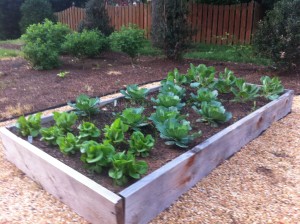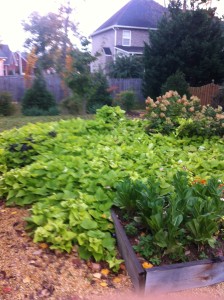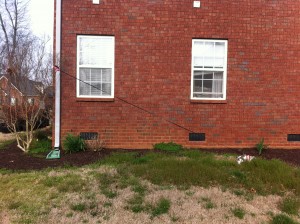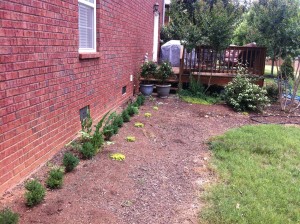Have you ever noticed how sidewalks or buildings draw your eye?

This raised beds creates a sharp Line between the soil and the footpath. The sharp Line creates a clean look.
You just follow the edge, unconsciously, seeing where it leads.
Line is a landscape design principle because it’s inherent in our nature. We want excitement and uniformity at the same time!
How Pros Use Line to Create Great Landscapes
- Sidewalks and Pathways: It’s common to see straight edges formed by stone, concrete, etc. Typically these paths lead to a focal point.
- Vertical Lines from Trees: Trees form different kinds of Line based on their natural shape. There are several tree shapes ranging from round, to oval, and columnar. Mixing your shapes creates interest and keeps the landscape from seeming like a fortress. If you want privacy, you want more upright lines.
- Architectural Lines from Your Home: Matching the forms of your home’s gables and roof lines creates uniformity and is pleasing to the eye.
How You Can Get Started Right Now
- Are you starting from scratch? Is your home new? If yes, then think about trees first. They take up the most space and create the most vertical Line.
- Do you already have a mature landscape? If so, think about trimming branches in trees or adding shrubs that add different lines like a Grey Owl Juniper (Juniperus ‘Grey Owl’), New Zealand Flax (Phormium), or any ornamental grass. All add different kinds of Line to your landscape.
- Edge your existing beds. Use mulch to create a sharp contrast with your lawn or driveway, or use an edging tool to dig a narrow trench between the bed and your lawn.








